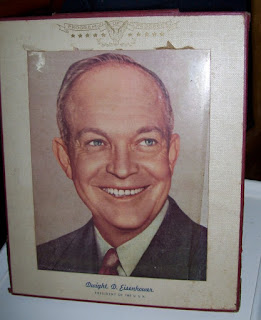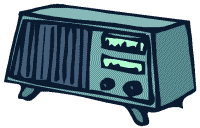Friday afternoon art classes
When I was a little girl attending Duff Valley District 4, we all loved Friday afternoons. (I'm speaking for myself and the half-dozen other students in our little one-room schoolhouse.) Of course, Friday afternoons were wonderful because the weekend lay ahead. And the other reason that they were wonderful was that we had art class after last recess.
We all did the same art project, no matter which grade we were in -- kindergarten, eighth grade, or anything between. Some of us cut, pasted, and colored a lot better than others, but before we went home on Friday afternoon, everyone's project was pinned to a bulletin board where it would be displayed for the next week or two. Seeing my handwork in comparison with the others motivated me to cut, paste, and color more neatly.
And we did do a lot of cutting, pasting, and coloring. Sometimes the teacher used the hectograph to copy a coloring sheet, and sometimes, we drew our own pictures. Sometimes we cut pieces from construction paper and pasted the pieces together to make a valentine or a turkey or whatnot.
A lot of our art work was flat, but I do remember some three-dimensional projects: flowers cut from egg carton sections or made from crepe paper, mosaics made with shards of Easter-egg shells, and even a sculpture of a cow's head made from crumpled aluminum foil.
Once in a while, our teacher got out the water-paint boxes or mixed up a batch of tempera paint. We all painted whatever she announced our subject would be -- such as "trees in autumn colors." And once in a blue moon, we did a finger-painting.
We painted just often enough to make us super-excited when we got to do it again. I am not sure whether we painted so rarely because paints were expensive or because our teachers hated the mess.
I remember quite a bit of spatter painting. It only required one color of paint, and the paint was applied with the teacher's close supervision, outside if the weather permitted. It only took a minute to do the spattering. The procedure was this:
- Draw or trace a shape and cut it out.
- Lay the cut-out (or several cut-outs) on a sheet of construction paper.
- Put on a very large shirt, backwards.
- Dip the bristles of an old toothbrush in tempera paint and scrub the toothbrush over a small window screen so little drops of paint spray all over the paper.
- Let the paint dry and remove the cut-outs.
 The day that I made my silhouette the teacher set up the filmstrip projector while we were gone to recess. When we came back inside, we took turns sitting in the projector's bright light and tracing each other's silhouettes. Then we cut out our silhouettes and spatter-painted them. I think I was in third or fourth grade at the time.
The day that I made my silhouette the teacher set up the filmstrip projector while we were gone to recess. When we came back inside, we took turns sitting in the projector's bright light and tracing each other's silhouettes. Then we cut out our silhouettes and spatter-painted them. I think I was in third or fourth grade at the time.I did dozens of Friday afternoon art projects before I left country school at the end of 8th grade, but the only one I still have is my silhouette. I found it in my mother's things after she passed away.










 One hot afternoon every summer, the Minnesota Woolen Mill salesman came to visit in his dust-covered station wagon.
One hot afternoon every summer, the Minnesota Woolen Mill salesman came to visit in his dust-covered station wagon. If my mother decided to buy something, the salesman filled out the order form. Then he refolded his samples, packed his suitcases, loaded his stationwagon, and drove on to the next ranch. Several months later, a package from Minnesota Woolen Mill arrived at our mailbox.
If my mother decided to buy something, the salesman filled out the order form. Then he refolded his samples, packed his suitcases, loaded his stationwagon, and drove on to the next ranch. Several months later, a package from Minnesota Woolen Mill arrived at our mailbox.
 Along with the
Along with the  When I was a child in the Sandhills of northern Nebraska, most country folks still had a milkcow or two. Country kids grew up drinking fresh, unpasteurized milk, and lots of it. Most of our families had plenty of extra milk to make dairy-based treats occasionally -- such as hot cocoa.
When I was a child in the Sandhills of northern Nebraska, most country folks still had a milkcow or two. Country kids grew up drinking fresh, unpasteurized milk, and lots of it. Most of our families had plenty of extra milk to make dairy-based treats occasionally -- such as hot cocoa.